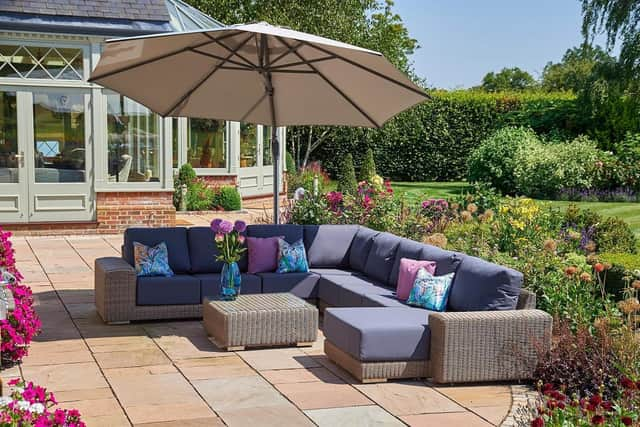Expert advice and the science behind keeping your home cool as temperatures soar in summer heatwaves
This week’s scorching hot weather is something we and our homes will have to get used to as global warming takes hold.
Patrick Chester, head of ventilation and building airtightness at Heat, Space and Light Ltd, says: “The top-ten warmest years in the UK have all occurred since 2002, according to the Royal Meteorological Society and as homes are increasingly built to high levels of thermal efficiency for our cold winters, the risk of them overheating in summer is massive if they are not designed with overheating mitigation in mind.”
Advertisement
Hide AdAdvertisement
Hide AdHere Patrick tells us how we can keep new and older homes cooler:


“We recently completed the commissioning, balancing and handover of a mechanical heat recovery and ventilation (MVHR) system in a newly-built house. It was designed with simple, effective cooling technologies borne from the client’s experience of living in tropical countries.
“Instead of air conditioning, the home uses passive cooling techniques such as external shading over all windows and doors, cross-flow ventilation and an MVHR with integrated cooling linked to the air-source heat pump to ensure the home is warm in winter and cool in summer. Here’s how each cooling system works, and how you can incorporate them into your home”
External shading is more important than internal shading.
A few concepts from building physics are important to consider when designing in external shading to a home. The first is that solar gain in summer, this is sunlight hitting the windows, is by far the greatest contributor to an overheating home.
Advertisement
Hide AdAdvertisement
Hide AdLots of south-facing glazing will cause indoor temperatures to rise when the sun hits it in summer. A set of four metre long sliding doors facing south in midday in summer would produce the equivalent of having the central heating going at full blast in the room.
If that heat isn’t dealt with, the home will soar past the ambient outdoor air temperature and not cool down again until the sun has gone down. A building physics concept is that internal shading still allows roughly ninety per cent of heat into the home, whereas external blinds keep out roughly ninety per cent of the heat.
Internal shading is basically useless at stopping overheating and the impact of external shading on cooling in summer is massive.
Designing in external shading doesn’t have to be complicated, and it can be temporary or all year round: parasols, awnings, trellises, deciduous trees, shutters or external blinds are options.
Advertisement
Hide AdAdvertisement
Hide AdExternal blinds are common on continental homes, but they are quite new to the UK. First and foremost they keep the heat from the windows, but they also offer safety and security all year round. Setting the windows deeper into the reveals or having larger overhangs on the roof can be a simple design tweak on new-builds that costs nothing.
The aim is to keep the heat from the windows in summer when the sun is highest, but still enjoy the sun’s light in winter when it’s needed.
Ventilation is the second key to cooling a home.
I have written extensively about the benefits of MVHR and for the home mentioned above, we designed an MVHR system that has an automatic summer bypass mode, which extracts hot, humid air from the home straight to outside in summer. There is also a small additional cooling element installed on the supply ductwork.
This chiller coil links to a reversible air-source heat pump, and when the temperature indoors hits a certain temperature, the heat pump sends chilled water to the coil to cool down the supply air to the MVHR valves in the bedrooms and living areas.
Advertisement
Hide AdAdvertisement
Hide AdThe system also features a scheduler to boost ventilation in the evenings when the air is often cooler. Within two to three hours the entire volume of air heated in the daytime will have been refreshed by cooler night-time air.
You should also consider the “Albedo” rating of the external fabric of a home. This is the term for how well a surface reflects solar energy. An albedo of zero means the surface is black, and one means the surface is pure white. White external walls will help to reflect the sun’s heat and every little helps.
Green roofs and walls can also help provide a buffer zone for heat to dissipate via the biosystem of the plants.
Cross-flow ventilation is the final key to staying cool. If heat enters the home, it’s important that it can be purged and continental residents know that best practice is to keep the blinds closed during the heat of the day and then open at night to let out any daytime heat.
Advertisement
Hide AdAdvertisement
Hide AdHigh ceilings and concrete floors or stone walls will also help to mitigate heat output around the home as can minimising the size of some windows
*Visit www.heatspaceandlight.com for more information.